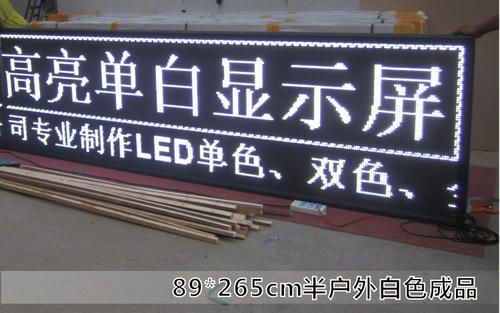industrial news
Judge the true brightness index of LED electronic large screen
With the increase in the frequency of LED digital screens in our lives, the demand for operation and maintenance of LED electronic digital video wall has also increased. The quality of LED light-emitting lamps for led walls sold in the market is also uneven, and the brightness is not guaranteed. Many of the light-emitting diodes marked with brightness 1400-1600MCD in various stores cannot reach the marked brightness, so they are shoddy. The phenomenon deceives consumers. Most people do not have the ability to identify the brightness of the LED light-emitting tube. Therefore, the merchants say that the brightness is the brightness. The size of the brightness is not the bigger the better, but according to customer needs, the appropriate brightness will achieve unexpected results.
1. How to identify the brightness of the led electronic screen?
1. Do it yourself to make a 3V DC power supply that is easy to connect to the light-emitting diodes, preferably using batteries. You can use two button batteries, put them in a small plastic tube and lead out two probes as positive and negative outputs. The end is directly made into a switch with shrapnel. When in use, the positive and negative probes correspond to the positive and negative of the light-emitting diode. On the negative pin, press and hold the switch at the end, and the luminous tube will emit light.
2. Secondly, combine a photoresistor and a digital multimeter to form a simple light metering device. Lead the photoresistor with two thin wires and connect them directly to the two pens of the digital multimeter. The multimeter is placed at the 20K position (depending on the photoresistor, Try to make the reading as accurate as possible). Note that the measured value is actually the resistance value of the photoresistor, so the brighter the light, the smaller the value.
3. Take an LED light-emitting diode and use the above 3V direct current to light it. The light-emitting head is facing and close to the photosensitive surface of the connected photoresistor. At this time, the multimeter reads to distinguish the brightness of the LED.
2. The brightness discrimination level refers to the brightness level of the image from the darkest to the whitest that the human eye can distinguish.
The gray level of led electronic screen is very high, which can reach 256 or even 1024. However, due to the limited sensitivity of human eyes to brightness, these gray levels cannot be fully recognized. That is to say, it is possible that many adjacent levels of gray scale human eyes look the same. Moreover, the distinguishing ability of eyes varies from person to person. For the display screen, the higher the level of human eye recognition, the better, because the displayed image is for people to see after all. The more brightness levels that the human eye can distinguish, the larger the color space of the display, and the greater the potential for displaying rich colors. The brightness discrimination level can be tested with special software. Generally, the display screen can reach 20 levels or more, even if it is a good level.
3. Requirements for brightness and viewing angle:
The brightness of the indoor full-color LED electronic screen must be above 800cd/m2, and the brightness of the outdoor full-color screen must be above 1500cd/m2 to ensure the normal operation of the display, otherwise the displayed image will not be clear because the brightness is too low. The size of the brightness is mainly determined by the quality of the LED die. The size of the viewing angle directly determines the number of LED electronic screen audiences, so the larger the better. The viewing angle is mainly determined by the die package.
It is very necessary to determine the brightness of the LED electronic screen. The current brightness requirements of the LED electronic screen for urban lighting, or new regulations, the brightness of the LED screen is too high, it will cause trouble to nearby residents. In order to avoid bad reactions, this requires businesses to have relevant professional knowledge when customizing and maintaining LED electronic screens.


